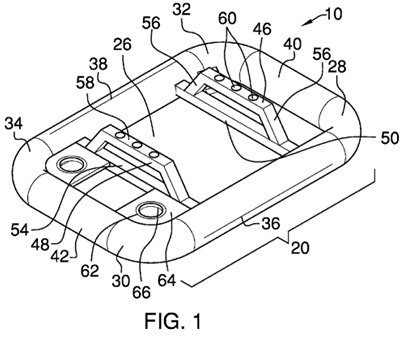The US Court of Appeals for the Federal Circuit affirmed the dismissal of a patent infringement suit on § 101 grounds, rejecting the patentee’s argument that claim construction or discovery was required before assessing patent eligibility. Trinity Info Media, LLC v. Covalent, Inc., Case No. 22-1308 (Fed. Cir. July 14, 2023) (Stoll, Bryson, Cunningham, JJ.)
Trinity Info Media sued Covalent for infringement of patents related to poll-based networking systems that connect users in real time based on answers to polling questions. Covalent moved to dismiss, arguing that the patent claims were invalid under 35 U.S.C. § 101 because they were directed to patent-ineligible subject matter. In resolving the motion, the district court found that the claims were directed to the abstract idea of “matching users who gave corresponding answers to a question” and did not contain an inventive concept. The district court further found that the purported invention did not improve computer functionality but simply used “generic computer components as tools to perform the functions faster than a human would.” Accordingly, it found the asserted claims invalid under § 101 and granted the motion to dismiss. Trinity appealed.
Trinity argued that the district court erred by granting the motion without first allowing fact discovery and conducting claim construction. The Federal Circuit disagreed, finding that in order to overcome a motion to dismiss on § 101 grounds, “the patentee must propose a specific claim construction or identify specific facts that need development and explain why those circumstances must be resolved before the scope of the claims can be understood for § 101 purposes.” Trinity had identified claim terms to the district court, but never proffered any proposed constructions or explained how construction would affect the § 101 analysis. Because Trinity did not identify specific facts to be discovered or propose any particular claim construction that would alter the § 101 analysis, Trinity’s generic arguments were insufficient to avoid the motion to dismiss.
The Federal Circuit went on to analyze whether the asserted claims were invalid under the two-step framework established by Mayo and Alice. Under this framework, Step 1 evaluates whether the asserted claims are directed to a patent-ineligible concept, such as an abstract idea. Step 2 searches for an “inventive concept” by considering the claims to determine whether any elements “transform the nature of the claim” from ineligible subject matter into a patent-eligible application.
At Step 1, the Federal Circuit concluded that the claims were directed to the patent-ineligible abstract idea of “matching based on questioning.” The Court noted that a “telltale sign of abstraction is when the claimed functions are mental processes that can be performed in the human mind or using a pencil and paper” (citing Personal-Web), finding that the “human mind could review people’s answers to questions and identify matches based on those answers.” Further, the trivial variations appearing in some claims (e.g., using a handheld device, reviewing matches by swiping and matching based on gender) did not change the focus of the asserted claims. The Court explained that for software inventions, Step 1 [...]
Continue Reading
read more

 Subscribe
Subscribe



